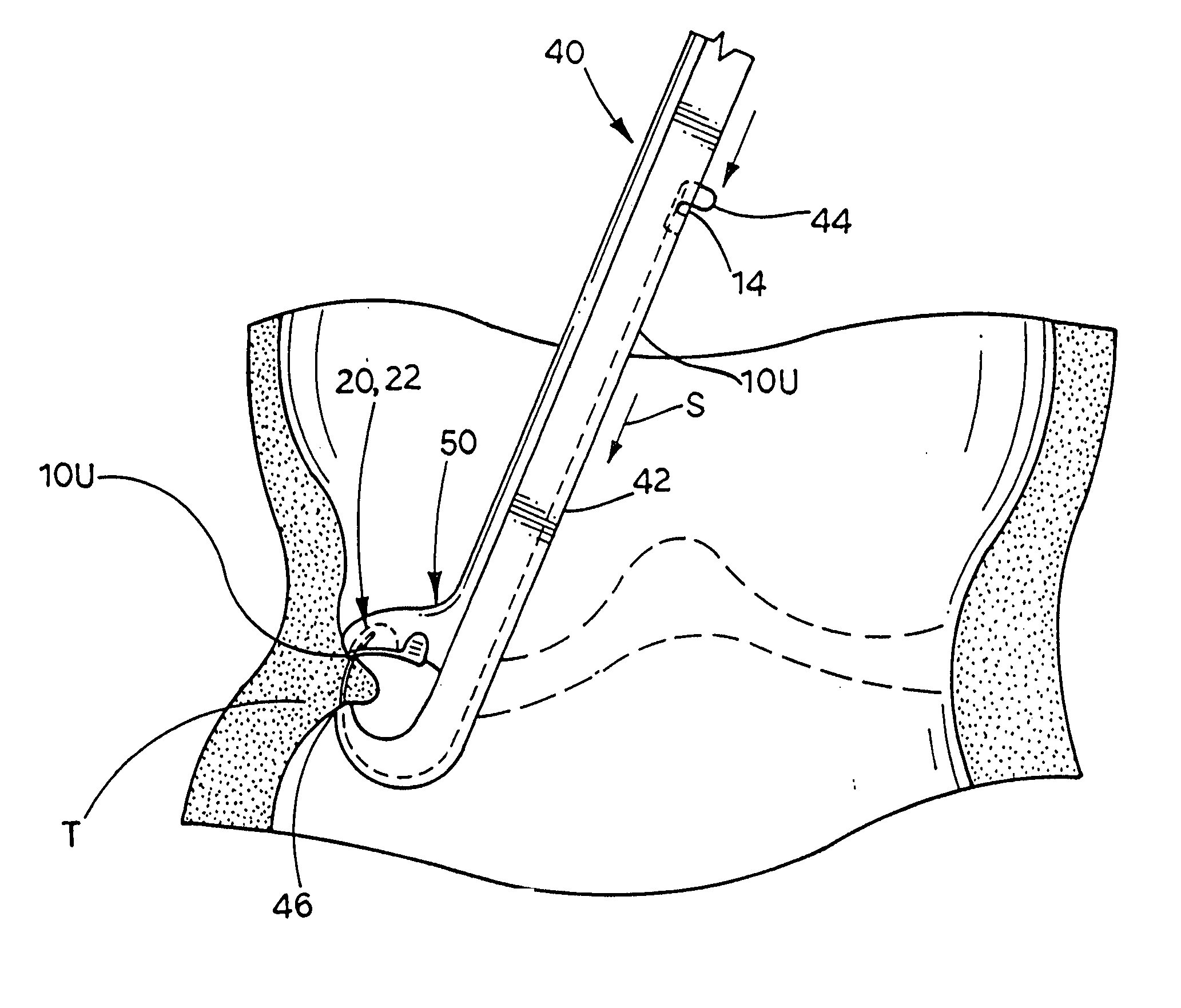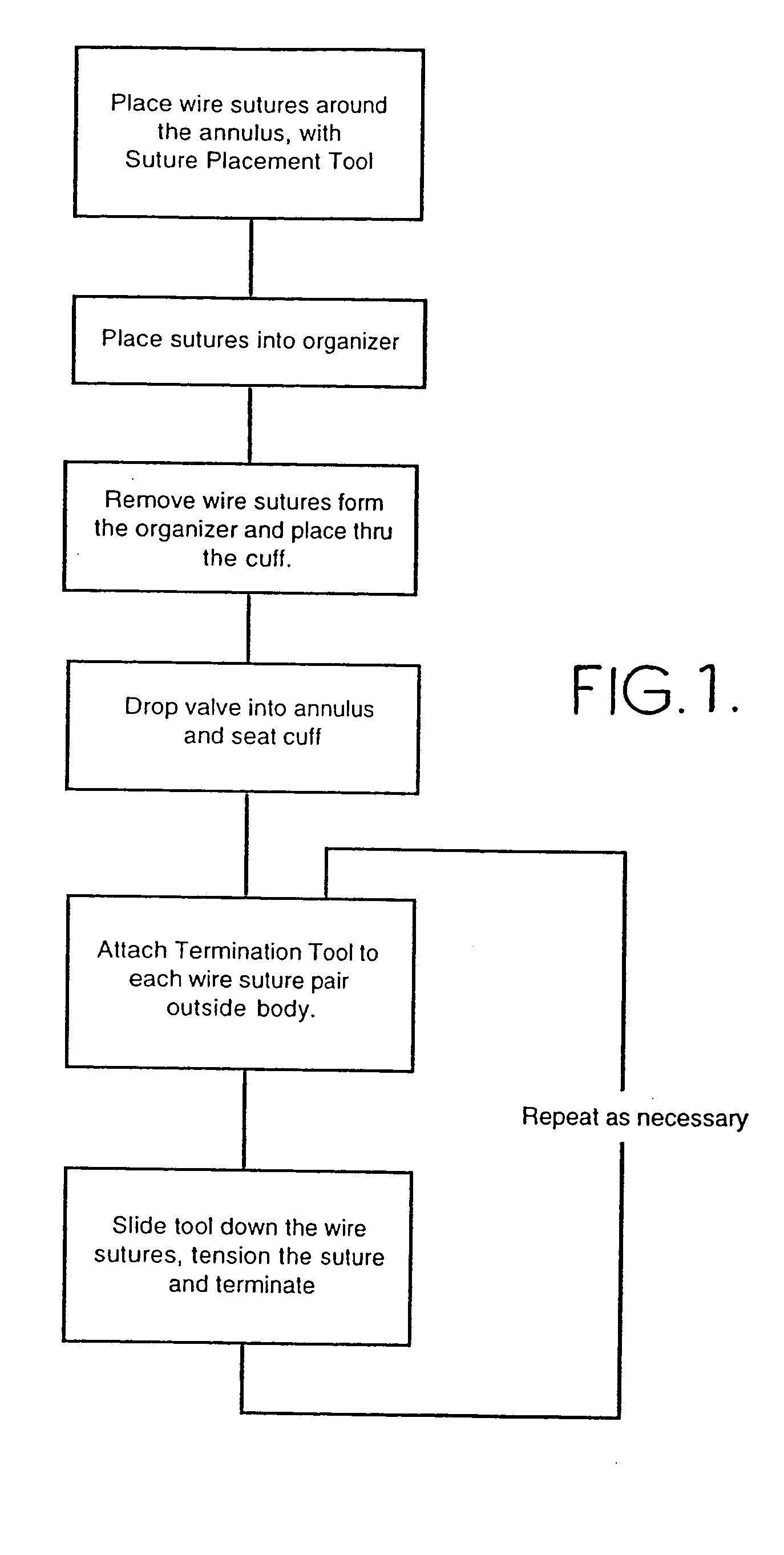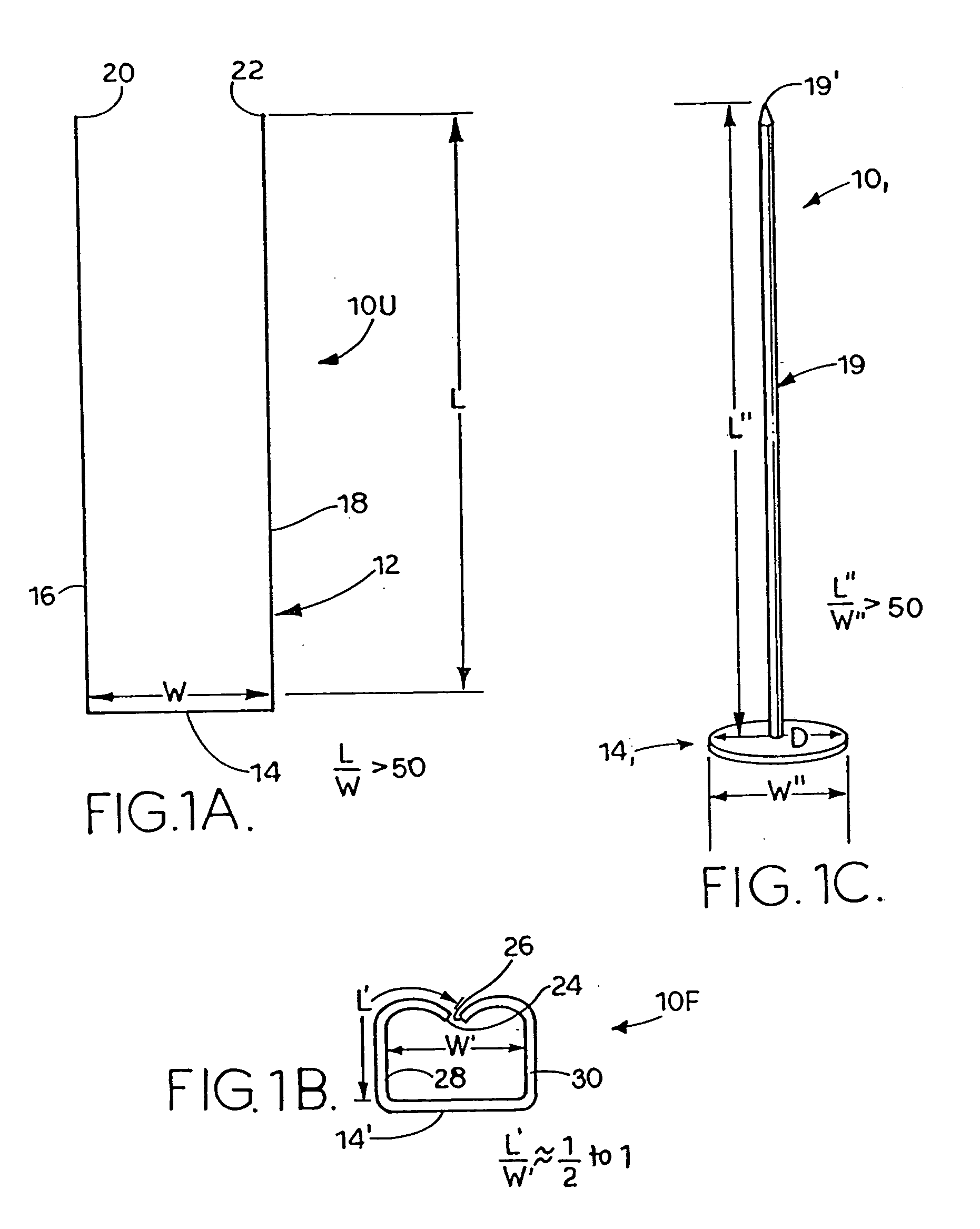Extremely long wire fasteners for use in minimally invasive surgery and means and methods for handling those fasteners
a technology of wire fasteners and wire fasteners, which is applied in the direction of surgical staples, applications, veterinary instruments, etc., can solve the problems of difficult manipulation of tools, knots, and methods that must be effectiv
- Summary
- Abstract
- Description
- Claims
- Application Information
AI Technical Summary
Benefits of technology
Problems solved by technology
Method used
Image
Examples
Embodiment Construction
[0111] Referring first to FIG. 1 for a broad overview of the means and method embodying the present invention, it is seen that a minimally invasive procedure is carried out by, after defining the necessary incisions, etc., placing the long leg wire fasteners of the present invention, then organizing the legs of those fasteners since the legs are long enough whereby some portion of the legs is located outside the patient. A sewing cuff of the prosthesis to be placed in the patient is placed on the fastener legs and guided down the legs into place. The prosthetic device, such as a heart valve in the best mode description here, is also placed on the legs of the fasteners and guided down the legs into place next to the sewing cuff. This is a relatively easy process since the fastener legs guide the items directly to the target area. A tensioning and forming tool is then guided down the legs of each individual fastener and operated. Operation of the tensioning and forming tool first immo...
PUM
 Login to View More
Login to View More Abstract
Description
Claims
Application Information
 Login to View More
Login to View More - R&D
- Intellectual Property
- Life Sciences
- Materials
- Tech Scout
- Unparalleled Data Quality
- Higher Quality Content
- 60% Fewer Hallucinations
Browse by: Latest US Patents, China's latest patents, Technical Efficacy Thesaurus, Application Domain, Technology Topic, Popular Technical Reports.
© 2025 PatSnap. All rights reserved.Legal|Privacy policy|Modern Slavery Act Transparency Statement|Sitemap|About US| Contact US: help@patsnap.com



